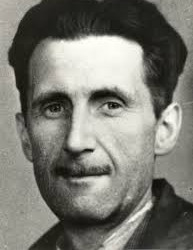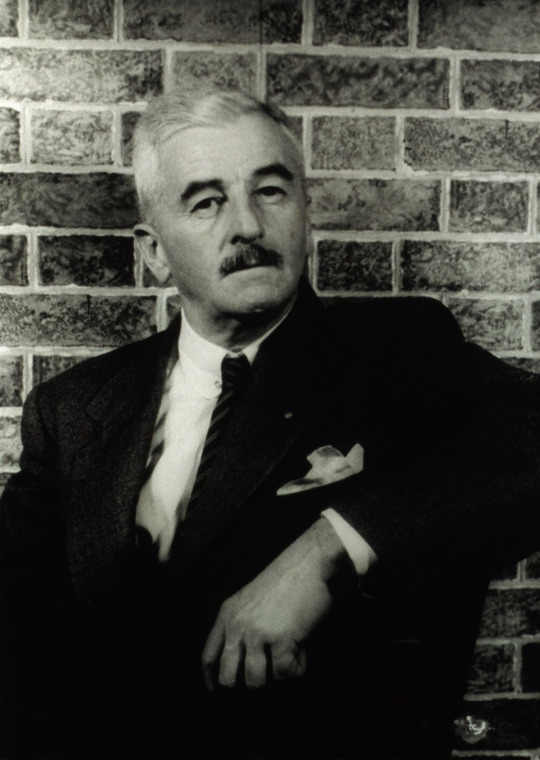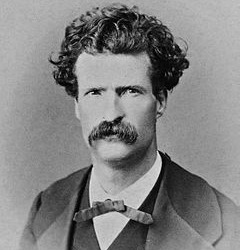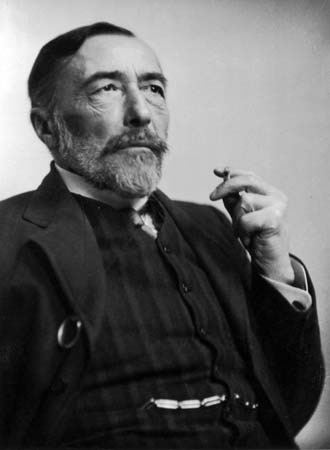*Introvert*Pandak*Pango*PlatLahat* Anime/Kdrama/Kpop/FOODS/ Obvi.Wattpad_Addict
Don't wanna be here? Send us removal request.
Photo
satruee

Maybe you’ve outgrown your little glass jar! 🌸 Environments including the people, places, and practice around us.
8K notes
·
View notes
Text
hahahha
When I welcome a new student into my classroom

902 notes
·
View notes
Video
youtube
“Mamamatay kana ,mamamatay kana ,sumbong kita sa kapatid ko”
2 notes
·
View notes
Video
youtube
Galing ni Atih Donna “it’s not you,James” “but it’s not me too” “it’s Gemma” “Were far too different from each other ,James” “oo magkaibang-magkaiba talaga tayo dahil Tao ako,James at Hayop ka, Bagay naman si Gemma dahil Plastic siya” -VeryWell Said.
2 notes
·
View notes
Text
Writers of Literature

Oscar Fingal O'Flahertie Wills Wilde (16 October 1854 – 30 November 1900) was an Irish poet and playwright. After writing in different forms throughout the 1880s, he became one of London's most popular playwrights in the early 1890s. He is best remembered for his epigrams and plays, his novel The Picture of Dorian Gray, as well as the circumstances of his imprisonment and early death.
Wilde's parents were successful Anglo-Irish intellectuals in Dublin. Their son became fluent in French and German early in life. At university, Wilde read Greats; he proved himself to be an outstanding classicist, first at Dublin, then at Oxford. He became known for his involvement in the rising philosophy of aestheticism, led by two of his tutors, Walter Pater and John Ruskin. After university, Wilde moved to London into fashionable cultural and social circles.
As a spokesman for aestheticism, he tried his hand at various literary activities: he published a book of poems, lectured in the United States and Canada on the new "English Renaissance in Art", and then returned to London where he worked prolifically as a journalist. Known for his biting wit, flamboyant dress and glittering conversational skill, Wilde became one of the best-known personalities of his day. At the turn of the 1890s, he refined his ideas about the supremacy of art in a series of dialogues and essays, and incorporated themes of decadence, duplicity, and beauty into what would be his only novel, The Picture of Dorian Gray (1890). The opportunity to construct aesthetic details precisely, and combine them with larger social themes, drew Wilde to write drama. He wrote Salome (1891) in French while in Paris but it was refused a licence for England due to an absolute prohibition on the portrayal of Biblical subjects on the English stage. Unperturbed, Wilde produced four society comedies in the early 1890s, which made him one of the most successful playwrights of late-Victorian London.
At the height of his fame and success, while The Importance of Being Earnest (1895) was still being performed in London, Wilde had the Marquess of Queensberry prosecuted for criminal libel. The Marquess was the father of Wilde's lover, Lord Alfred Douglas. The libel trial unearthed evidence that caused Wilde to drop his charges and led to his own arrest and trial for gross indecency with men. After two more trials he was convicted and sentenced to two years' hard labour, the maximum penalty, and was jailed from 1895 to 1897. During his last year in prison, he wrote De Profundis (published posthumously in 1905), a long letter which discusses his spiritual journey through his trials, forming a dark counterpoint to his earlier philosophy of pleasure. Upon his release, he left immediately for France, never to return to Ireland or Britain. There he wrote his last work, The Ballad of Reading Gaol (1898), a long poem commemorating the harsh rhythms of prison life. He died destitute in Paris at the age of 46.

Eric Arthur Blair (25 June 1903 – 21 January 1950), better known by his pen name George Orwell, was an English novelist, essayist, journalist, and critic. His work is marked by lucid prose, awareness of social injustice, opposition to totalitarianism, and outspoken support of democratic socialism.
Orwell wrote literary criticism, poetry, fiction, and polemical journalism. He is best known for the allegorical novella Animal Farm (1945) and the dystopian novel Nineteen Eighty-Four (1949). His non-fiction works, including The Road to Wigan Pier (1937), documenting his experience of working class life in the north of England, and Homage to Catalonia (1938), an account of his experiences in the Spanish Civil War, are widely acclaimed, as are his essays on politics, literature, language, and culture. In 2008, The Times ranked him second on a list of "The 50 greatest British writers since 1945".
Orwell's work continues to influence popular and political culture, and the term Orwellian – descriptive of totalitarian or authoritarian social practices – has entered the language together with many of his neologisms, including Big Brother, Thought Police, Room 101, memory hole, newspeak, doublethink, proles, unperson, and thoughtcrime.

William Cuthbert Faulkner September 25, 1897 – July 6, 1962) was an American writer and Nobel Prizelaureate from Oxford, Mississippi. Faulkner wrote novels, short stories, a play, poetry, essays, and screenplays. He is primarily known for his novels and short stories set in the fictional Yoknapatawpha County, based on Lafayette County, Mississippi, where he spent most of his life.
Faulkner is one of the most celebrated writers in American literature generally and Southern literature specifically. Though his work was published as early as 1919, and largely during the 1920s and 1930s, Faulkner was not widely known until receiving the 1949 Nobel Prize in Literature, for which he became the only Mississippi-born Nobel winner. Two of his works, A Fable (1954) and his last novel The Reivers (1962), won the Pulitzer Prize for Fiction. In 1998, the Modern Library ranked his 1929 novel The Sound and the Fury sixth on its list of the 100 best English-language novels of the 20th century; also on the list were As I Lay Dying (1930) and Light in August (1932). Absalom, Absalom! (1936) appears on similar lists. His first published story, "A Rose for Emily", is one of the most famous an American has written.

Samuel Langhorne Clemens (November 30, 1835 – April 21, 1910), better known by his pen name Mark Twain, was an American writer, humorist, entrepreneur, publisher, and lecturer. Among his novels are The Adventures of Tom Sawyer(1876) and its sequel, the Adventures of Huckleberry Finn (1885), the latter often called "The Great American Novel".
Twain was raised in Hannibal, Missouri, which later provided the setting for Tom Sawyer and Huckleberry Finn. He served an apprenticeship with a printer and then worked as a typesetter, contributing articles to the newspaper of his older brother Orion Clemens. He later became a riverboat pilot on the Mississippi River before heading west to join Orion in Nevada. He referred humorously to his lack of success at mining, turning to journalism for the Virginia City Territorial Enterprise. His humorous story, "The Celebrated Jumping Frog of Calaveras County", was published in 1865, based on a story that he heard at Angels Hotel in Angels Camp, California where he had spent some time as a miner. The short story brought international attention and was even translated into French.His wit and satire, in prose and in speech, earned praise from critics and peers, and he was a friend to presidents, artists, industrialists, and European royalty.
Twain earned a great deal of money from his writings and lectures, but he invested in ventures that lost most of it—notably the Paige Compositor, a mechanical typesetter that failed because of its complexity and imprecision. He filed for bankruptcy in the wake of these financial setbacks, but he eventually overcame his financial troubles with the help of Henry Huttleston Rogers. He chose to pay all his pre-bankruptcy creditors in full, even after he had no legal responsibility to do so.
Twain was born shortly after an appearance of Halley's Comet, and he predicted that he would "go out with it" as well; he died the day after the comet returned. He was lauded as the "greatest humorist this country has produced",and William Faulkner called him "the father of American literature".

Joseph Conrad Józef Teodor Konrad Korzeniowski; 3 December 1857 – 3 August 1924) was a Polish-British writer regarded as one of the greatest novelists to write in the English language. He joined the British merchant marine in 1878, and was granted British citizenship in 1886. Though he did not speak English fluently until his twenties, he was a master prose stylist who brought a non-English sensibility into English literature.He wrote stories and novels, many with a nautical setting, that depict trials of the human spirit in the midst of an impassive, inscrutable universe.
Conrad is considered an early modernist, though his works still contain elements of 19th-century realism.His narrative style and anti-heroic characters have influenced numerous authors, and many films have been adapted from, or inspired by, his works.
Writing in the heyday of the British Empire, Conrad drew on, among other things, his native Poland's national experiences and his own experiences in the French and British merchant navies, to create short stories and novels that reflect aspects of a European-dominated world —including imperialism and colonialism —and that profoundly explore the human psyche. @maamdoralakwatsera
2 notes
·
View notes
Photo
Relate huhu @shewiiilblog

I was interviewed by Pamela Rosen of @evernote about my creative process and my “unique double-life” as an orthodontist. Read the profile here.
The Shape of Ideas Book | The Shape of Ideas Calendar | Incidental Comics Poster Shop
1K notes
·
View notes
Text
CONTRIBUTORS OF LITERATURE

@maamdoralakwatsera
3 notes
·
View notes
Text
FAMOUS LITERATURE WRITERS

William Shakespeare was an English poet, playwright and actor, widely regarded as the greatest writer in the English language and the world's pre-eminent dramatist. He is often called England's national poet and the "Bard of Avon".

@maamdoralakwatsera
3 notes
·
View notes
Text
Manila,Philippines

Manila, the capital of the Philippines, is a densely populated bayside city on the island of Luzon, which mixes Spanish colonial architecture with modern skyscrapers. Intramuros, a walled city in colonial times, is the heart of Old Manila.@maamdoralakwatsera HISTORY IN MANILA,INTRAMUROS.

Baluarte de San Diego
Located along the walls of Intramuros, Manila, it was designed and built by Jesuit priest Antonio Sedeno from 1586 to 1587 and it is one of the oldest stone fortifications in Intramuros. Began as a circular fort called Fort Nuestra Senora de Guia, renovated in 1593 to join the walls of the city. Fort fell in disrepair and in 1644 construction began for a new Baluarte which was completed between 1653 and 1663. Resembling an ace of spades, it housed a foundry during the 18th century. Baluarte de San Diego was breached by British forces in 1762 and it was restored and strengthened when the Spaniards returned, but was damaged and abandoned after the 1862 earthquake. It was totally destroyed during the Battle of Manila in 1945 but the restoration began in 1979 and it was completed in 1992. Though one will notice that the structure is very old and has molds on it but it preserves the glory of history in it. By the way watch out for flying golf balls since the place is just beside the Intramuros Golf Course. The site is currently maintained as an archipelago site and gardens and pergola were added to make Baluarte de San Diego more appealing to visitors and more suitable for special occasions. It is open to the public but may be rented for private functions. CULTURE AND TRADITION IN MANILA.

Aliwan Fiesta It is one of the most popular celebrations in the Philippines. It started in 2003 but has already earned a place among the parties most visited by tourists. The Aliwan Fiesta is an annual event that brings together different cultures across the country, showing their dances, traditions, art and culture. It is a good opportunity to learn what gathers in the country, see the traditional costumes and customs of each culture. Really interesting!

Santo Niño Manila has many religious festivals. The celebration of the Santo Niño makes Filipinos decorate their streets — especially the district of Tondo and Pandacan — with striking colors and decorations, dancers and music. A good show to discover this festival during your trip.

Feast of Black Nazarine It is one of the most famous religious processions of the Philippines. Thousands of people gather in Quaipo, Manila, and celebrate the figure of Christ, a statue built more than two centuries ago. In this procession, barefoot men and women join and walk for hours through the streets of the city.

Old Makati's Bailes de los Arcos The Baile de los Arcos is a party held for generations in Manila. It also has a religious character, since it's dedicated to the Virgen de la Rosa, Saint Peter, and Saint Paul. The young women are the protagonists of this Filipino festival. They rehearsed a traditional dance for months and it's given as an offering and as a thank you for the saints for all the favors and wishes they have granted throughout the year.

Buling-Buling in Pandacan Manila, and Philippines as a whole, have traditions really attached to the dance. The buling-buling in Pandacan is one of the most popular dance celebrations in the area. In fact, it has become the official dance of Manila. This festival is represented by choreographed and studied dance shows. The people of Manila celebrate this with joy and hospitality.

Battle of Manila Every 3rd of February, the capital of the Philippines celebrates the release of its territory during World War II in 1945. The celebration is more discreet than other festivals in Manila, but citizens still celebrate their identity as a city and as a country.

Manila Day June 24th is a holiday in Manila. The party is celebrated by most religions living in the Philippines. Each of those prepare a feast to remember and celebrate their triumphs, traditions and culture. If you get a chance, try to travel to one of the islands of the Philippines to live this special party more intensely.
4 notes
·
View notes
